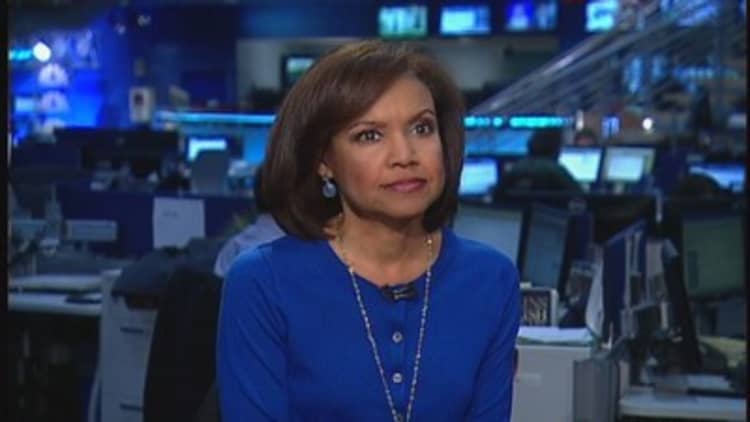
Spending on health care as a share of GDP in 2012 dropped slightly for the first time since 1997, the federal government announced Monday.
The slight drop in the health-care sector's share of the economy—from 17.3 percent of gross domestic product in 2011 to 17.2 percent in 2012—came as overall growth in health-care spending remained relatively low for the fourth consecutive year, officials said.
The decline relative to GDP was due to the fact that the overall economy grew at a comparatively robust 4.6 percent rate.
In 2012, health-care spending rose a modest 3.7 percent over the prior year to $2.8 trillion, as prescription drug prices were kept down due to several expiring patents. Total health spending works out to $8,915 per person.
Since 2009, the rate of increase in such spending has hovered between 3.6 percent and 3.8 percent annually, according to data compiled for the federal Centers for Medicare & Medicaid Services. The growth rate during that four-year span is the slowest ever recorded in the 53-year history of the National Health Expenditure Accounts data released Monday.
Just 0.1 percent of the increase in health spending from 2010-2012 was due to effects of the Affordable Care Act, also known as Obamacare, said Anne Martin, an economist in the Office of the Actuary at CMS
(Read more: Flu season could whack businesses hard this year)
"The relative stability since 2009 primarily reflects the lagged impacts of the recent severe economic recession," according to a report on the data in the periodical Health Affairs.
Martin said that 2012's rate was not due to "just one prominent trend that affected growth, it was a mixed bag of results."
In particular, a faster rate of growth in 2012 in spending on hospital services, and services from physicians and clinicians was offset by slower rates of growth in the prices of prescription drugs and nursing home services, CMS said. Hospital spending rose 4.9 percent, while physician and clinical services climbed 4.6 percent.
Also up was out-of-pocket spending by consumers, which grew at a 3.8 percent rate in 2012, compared to 3.5 percent in 2011.
Martin said that increase included "increased cost-sharing" for physicians and clinical services, "and the increased enrollment in these high-deductible plans," which have become more prevalent in the private insurance market.
Spending on retail prescription drugs grew slightly, by 0.4 percent in 2012 compared to 2011, as a number of big-selling, high-use drugs including Lipitor, Plavix and Singulair lost patent protection in 2011 and 2012, opening up competition from cheaper generic versions.
Martin noted that so-called patent ciff, which kept down the spending rate of prescription drugs, was "largely a one-time effect."
Another one-time effect came in spending on nursing care facilities and continuing care retirement communities, which saw a 1.6 percent increase in 2012, compared to a 4.3 percent increase seen in 2011. That reduction in 2012 was mainly due to the reduction of Medicare payments to skilled nursing facilities to adjust for a large hike in such payments the prior years.
(Read more: Obamacare demographics still a big mystery)
While saying the effects of Obamacare on the spending rate were "minimal," the CMS report noted that a provision of the Affordable Care Act began reducing updates of Medicare payments to providers in 2012, which helped keep down the rate of growth in Medicare spending that year.
Officials declined to predict how other provisions of the ACA, which kick in in earnest in 2014, could affect spending rates this year and in coming years. Obamacare insurance, which began being sold in the fall of 2013 on government-run exchanges, took effect for about 2 million people on Jan. 1, and millions more people could be enrolled in those plans by the end of the year.
(Read more: HealthCare.gov reboots its Obamacare Mr. Fix-it)
At least 4 million or so additional people have also enrolled in government-run Medicaid since Oct. 1. It remains to be seen how that access to insurance coverage will affect the use rate of health services, and, in turn, how that rate will affect overall prices.
CMS said it will release sometime this year its 10-year forecast for health spending. That forecast, which it releases annually, will include its view on the estimated impact of Obamacare.
—By CNBC's Dan Mangan. Follow him on Twitter @_DanMangan.


